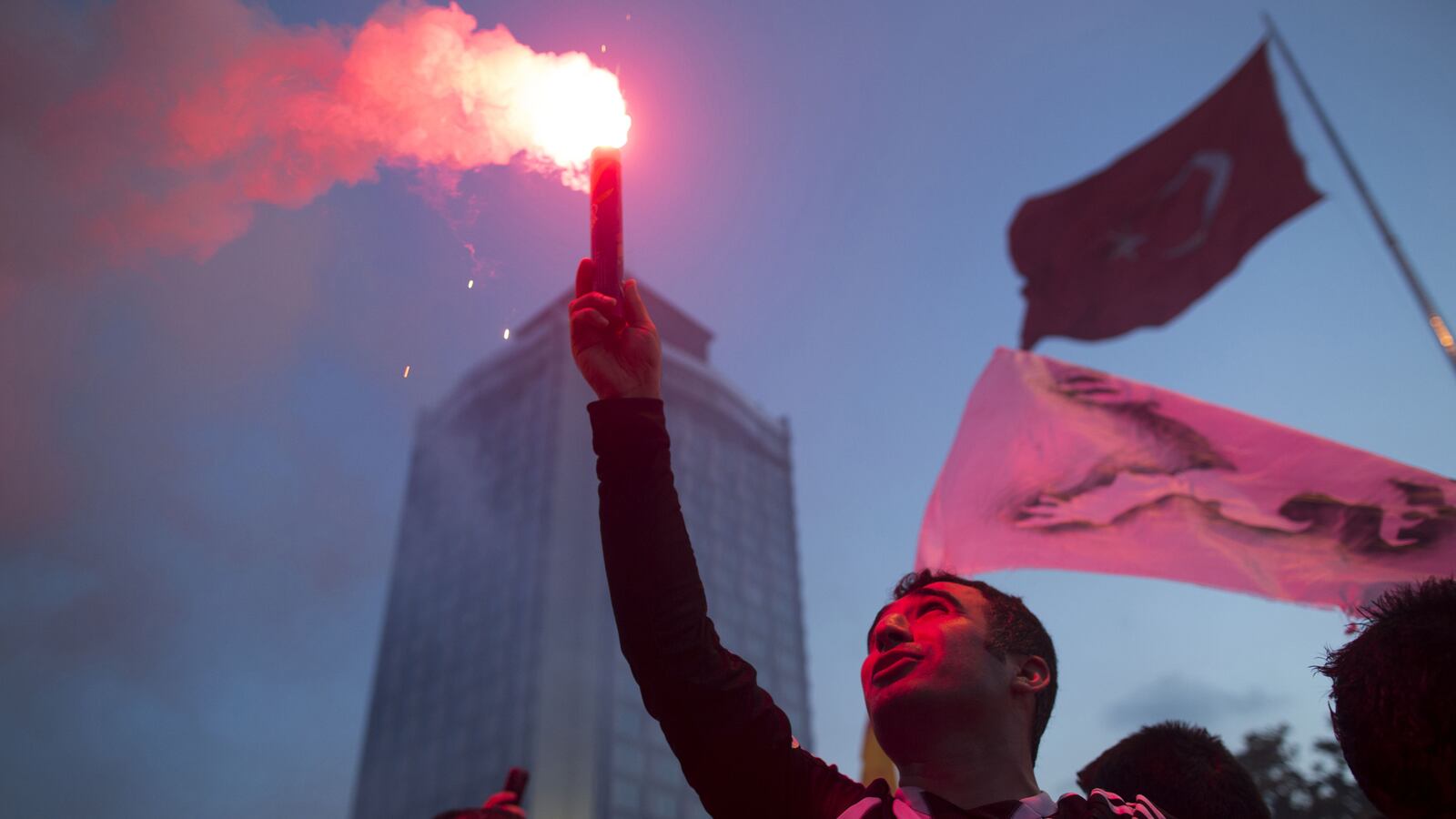Now that the protests have subsided and the police have retreated from the streets, there is the familiar smell of salt and seaweed in the wind, instead of pepper spray and tear gas. After days of tension, citizens have started to exchange anecdotes. Suddenly everyone has a story to tell.

One of these stories is about a muezzin who, in the middle of the night, found outside his mosque a number of protesters who had been running away from tear gas. He welcomed them all in. “Since this is the House of Allah its doors must be wide open to everyone regardless of who they are or where they are coming from,” he said. The protesters, many of whom were proud leftists, spent the evening inside the mosque. In the morning the muezzin performed his prayers with the locals and the protesters, everyone under the same dome.
With more than 35 million active Internet users, social media is big in Turkey. And during the four days of demonstrations, when the media coverage was limited, Twitter was all the rage. Today there are messages on Twitter and Facebook inviting people to pick up debris on the streets or paint a wall or fix a broken window. Alongside these, images of protesters and police officers circulated widely. In one of these photos a middle-aged woman with headscarf marches wearing a Guy Fawkes mask. In another, a police officer kindly helps a woman protester to wear her gas mask before he fires his tear gas.
The most retweeted messages are those with jests and puns and wordplay—and graffiti. On a wall in hasty letters: “The rich kids have better gas masks, we are jealous.” Nearby in an alley is writing that says: “Revolutionary Gays Everywhere.” One graffiti complains: “I could not find a slogan yet” while another one says cheerfully, “Welcome to the first traditional gas festival.”
A female student holds up a sign that reads: “As kids we used to chase pesticide trucks. Our generation is immune to toxic gas.” A similar placard says, “You think tear gas will scare the people who go and light a match to check whether a gas oven is working?” On the shutters of a cosmetics store someone has written, “Pepper spray is good for the skin.” Another slogan says, “You banned alcohol, we sobered up.”
The word “Istanbul” is written on the walls as “Isyanbul,” using the word “isyan,” which means “rebellion” in Turkish. One graffiti says: “I asked God Almighty, He said #resistGezi.” On the bucket of a bulldozer that had been previously used to uproot the trees in Gezi Park it says, “ I am Free!” And writing on the pavement reads: “You did not need to use pepper spray to make us weep, we are emotional people.”
Prime Minister Erdogan is famous for urging Turkish families to have three children. One of the signs seen during the demonstrations referred to this. It said: “Would you really like to have three kids like us?”
I talked to a young woman, a musician in her mid-20s. “The interesting thing was,” she says, “Our eyes were crying, our skin was burning and we were scared, so scared, but people were smiling at each other, and then I fell down, and a complete stranger pulled me up. I will never forget that.”
The protests have coined a term. In a live TV interview the prime minister called the demonstrators “çapulcu,” which means “looter” or “marauder” in Turkish. The social media was quick to pick up the word and redefine it as “someone who fights for his/her individual rights.” In the blink of an eye a neologism was formed, half Turkish, half English. The Turkish noun was transformed into an English verb. Now Wikipedia has a new entry: “Chapulling.”
The next day, all over the Internet there were messages using the new word: “I will be chapulling today,” or “Everyday we are chapulling,” or “Tomorrow I shall chapul again.” Cem Boyner, a well-known businessman and Chairman of Boyner Holding, was photographed holding up a placard that said, “I am neither a leftist, nor a rightist, I am a chapulcu.” Patti Smith gave support by taking a photograph with a sign that said: “We are all Chapulcu.”
Keep Calm cards were produced: “Keep Calm and Be a Chapulcu.” Another sign took a different approach: “I am Turkish I cannot Keep Calm.” Someone designed a Penguin Classics book jacket and posted on the Internet. It says on the cover, “The Art of Chapulling: An Introduction to Turkish Sociology.”
A student walks past me carrying a humor magazine in his hand. On its cover there is the photo of a young woman, her arms open wide, as if to embrace the high-pressure water being spurted on her with all its might. Underneath the photo it says, When You Rebel You Are Very Beautiful, Turkey. Humor magazines have always had political impact in this country and usually, the same copy is read by several people, being passed around. Many of today’s magazines are the offspring of the iconic Gırgır in the 1970s, which had a massive circulation of 450,000.
Today the streets of Istanbul have returned back to normal but not Taksim Square. People still gather in Gezi Park where everything started and there is both anticipation and tension in the air. Once again the park is full of tents. Except this time, it is far more crowded. There are people from all walks of life: liberals, leftists, feminists, Kemalists, nationalists, mystics, conservatives unhappy with the government and those who do not give themselves any labels. And two things unite people so varied: a common resentment, if not anger toward the prime minister who has still not softened his discourse; and a shared sense of humor, an amazing ability to smile under tear gas.





